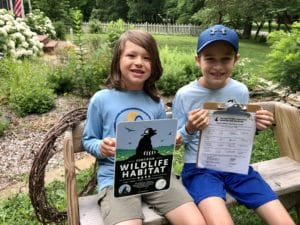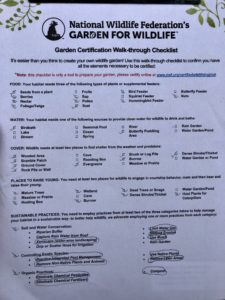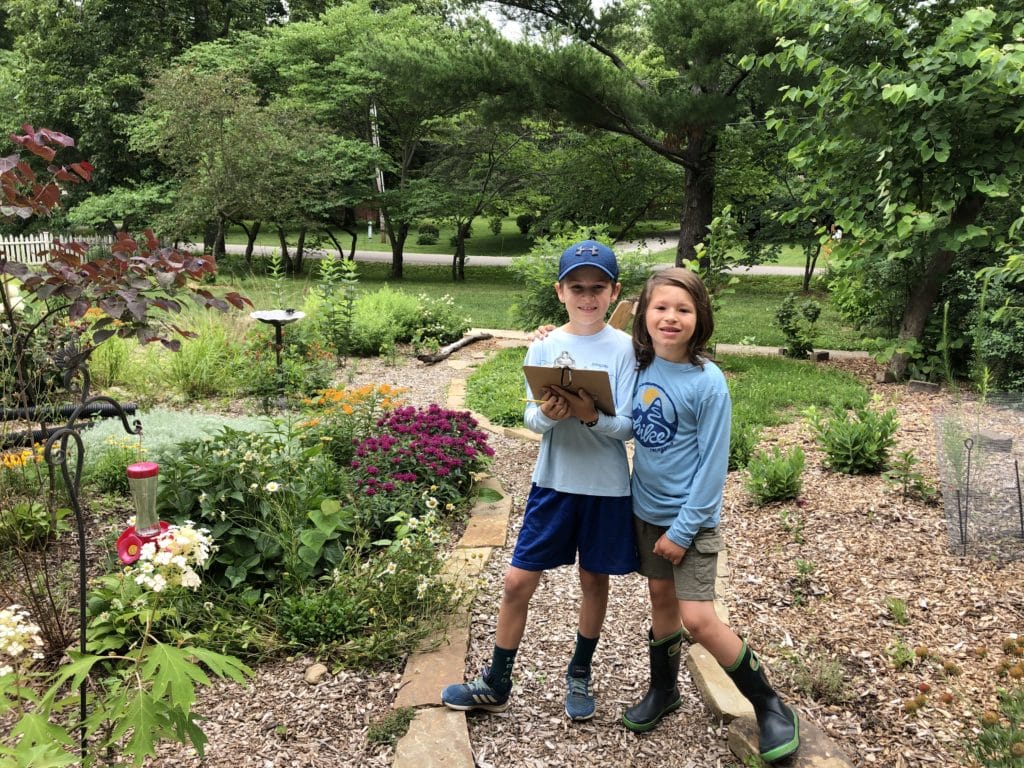PRN’s Amanda Pankau is pleased to share that her family’s garden in rural Piatt County is now officially a “Certified Wildlife Habitat!” The certification was created as part of the National Wildlife Federation’s Garden for Wildlife™ program. The program is celebrated as a way to create a garden that supports birds, butterflies, bees, frogs and other local wildlife.
 Getting Kids Involved
Getting Kids Involved
Amanda enjoyed involving her boys, ages 7 and 10, in the certification process. They helped complete the simple checklist that ensured their garden met all the requirements for certification, including natural sources of food, water, cover and places to raise young. Gardens must also be maintained in a sustainable way that incorporates native plants, conserves water and doesn’t rely on pesticides.
“We’ve slowly created and increased our garden areas since moving to our home four years ago,” Amanda said. “We focus mostly on native plants, including a lot of milkweed, but we like to add a fun ornamental shrub here and there as well. We also incorporate practices that are beneficial to overwintering insects, like not raking leaves and leaving stems standing through the winter. We’ve noticed a significant increase in our local insect population, particularly bees, over the past couple years.”

Garden for Wildlife Movement
Prairie Rivers Network is the Illinois state affiliate of the The National Wildlife Federation (NWF) and is a proud partner in the Garden for Wildlife Movement. Celebrating over 45 years, the Garden for Wildlife movement has recognized over 227,000 Certified Wildlife Habitat gardens across the United States to date, encompassing more than 2.5 million acres that support wildlife locally. Every Certified Wildlife Habitat garden is now also part of the Million Pollinator Garden Challenge, a national effort to create a million gardens that provide habitat for declining pollinator insects such butterflies and bees. Backyards, urban gardens, school grounds, businesses, places of worship, campuses, parks, farms, zoos and community landscapes can all be recognized as wildlife habitats through the program.
Participants who have their wildlife habitat garden certified receive a personalized certificate with a unique habitat number, a one-year membership to NWF with a subscription to National Wildlife magazine, a subscription to the Garden for Wildlife e-newsletter, a 10 percent discount to National Wildlife catalog, and the exclusive right to post a Certified Wildlife Habitat yard sign.
Amanda shared, “My boys really enjoyed completing the checklist and I loved watching them think through the different ways that animals interact with their habitats. I even got some ideas for improving our garden by simply doing the checklist. But the boys’ absolute favorite thing is the new sign. They both want to be Park Rangers when they grow up and the sign gives our garden an official park-like feel!”
For more information on NWF’s Garden for Wildlife movement and how to qualify to have a garden space recognized as a Certified Wildlife Habitat, visit https://www.nwf.org/garden or call 1-800-822-9919.








